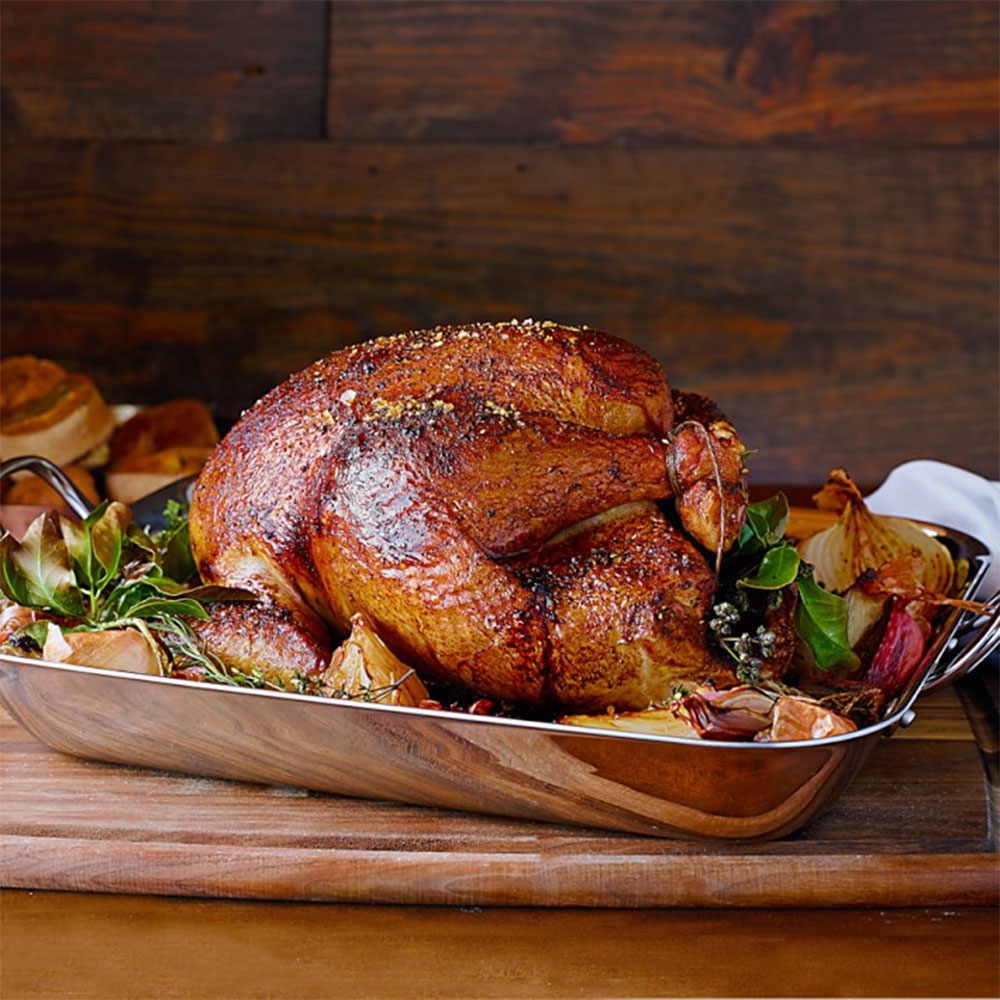
Let’s talk about roasting. Whether you have a turkey, a beef roast, or a pork roast in your sights as the mercury drops, some among you just pine to roast. We’re right there with you: Let’s turn up the heat! Here’s the Roasting 101 you need.
What Is a Roast, Anyway?
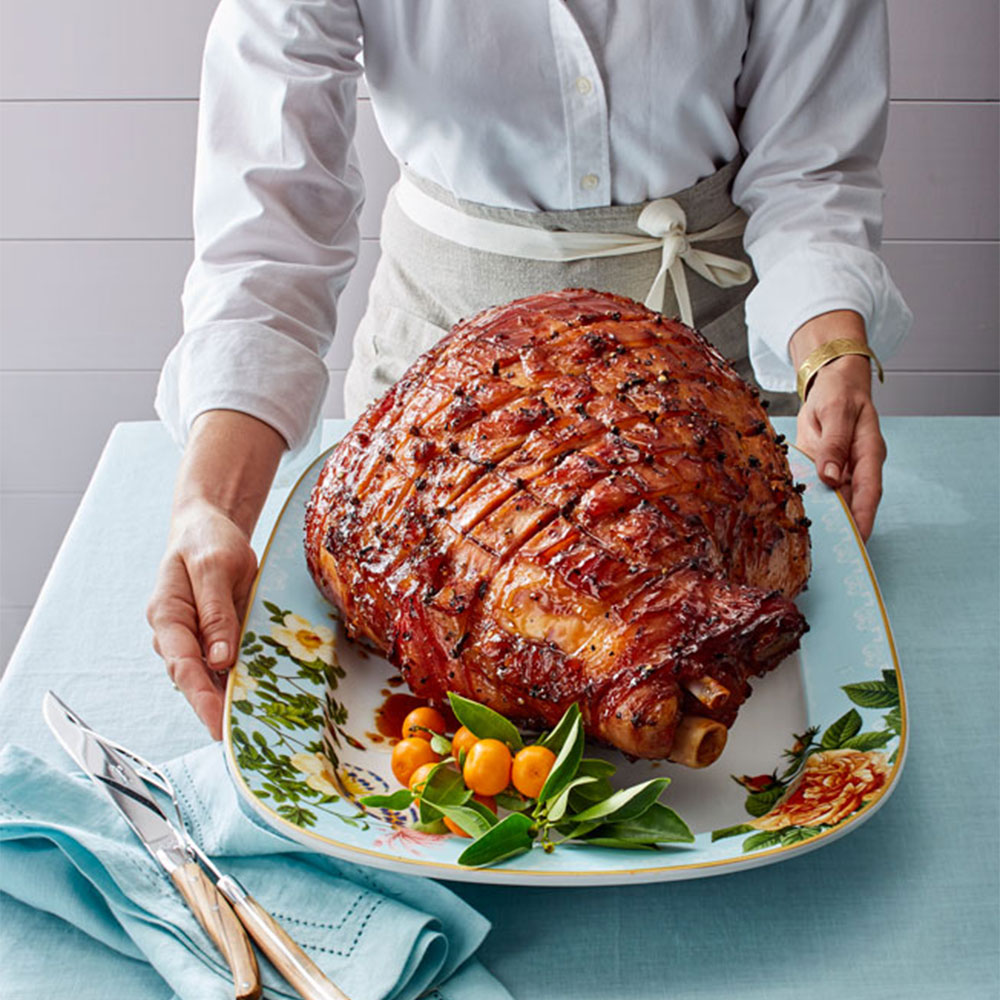
The handy Food Lover’s Companion says that to roast is “to oven-cook food (from meats to vegetables) in a shallow uncovered pan, a method that ideally produces a well-browned exterior and moist interior.” The temperatures for roasting are typically higher than for baking, our trusty source explains, and you must keep the pan uncovered. (Otherwise, it’s a stew.) Another thing: There’s got to be fat, either as part of the meat, or added, and the cut should be fairly tender. Tougher pieces of meat that are browned on the stovetop, then simmered in liquid for slow cooking in the oven? That’s a braise.
How Do I Get That Golden Burnished Look?
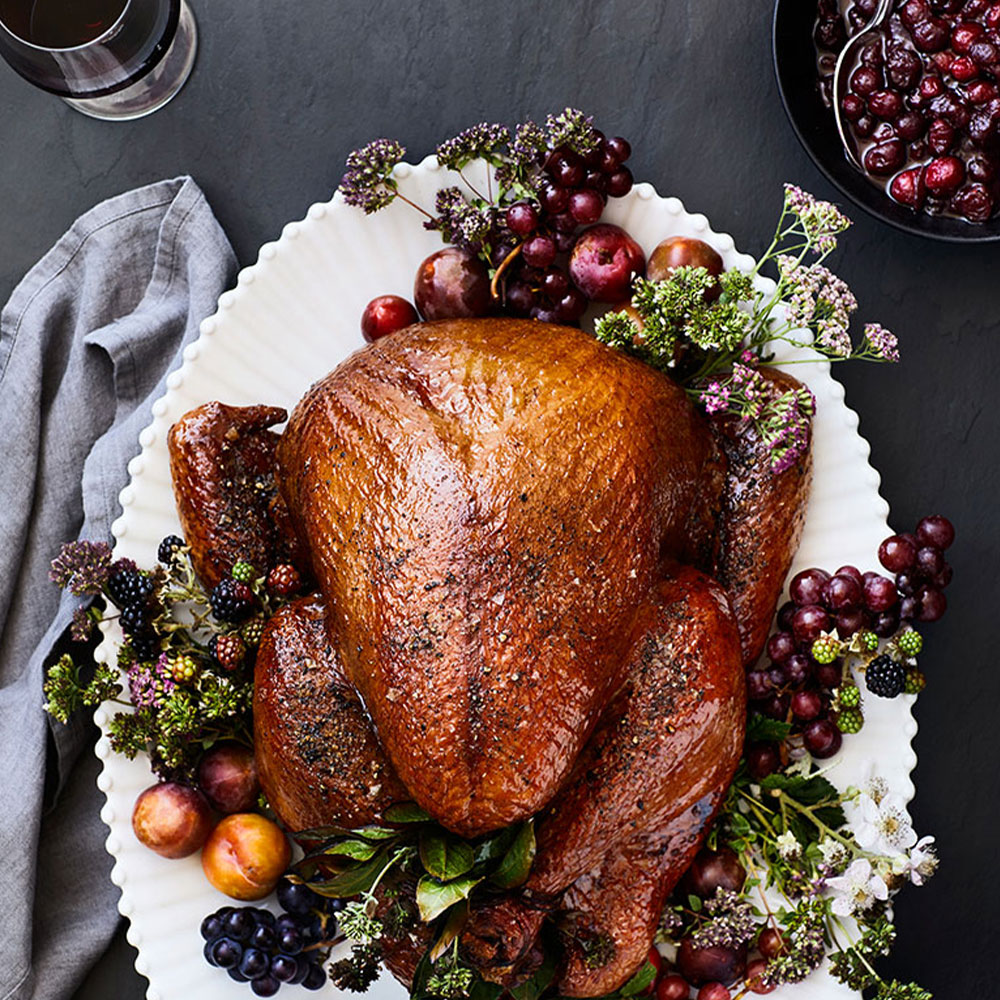
A dry piece of meat heated at relatively high heat should undergo the Maillard reaction. That’s a fancy term for a chemical process that occurs when heat transforms a protein or sugar, resulting in new tastes, bouquets, and colors. So if you like crisp skin on your turkey and chicken, grill stripes on your burgers, and a well-seared steak, you’re a fan of the Maillard reaction.
What Else Contributes to the Perfect Roast?
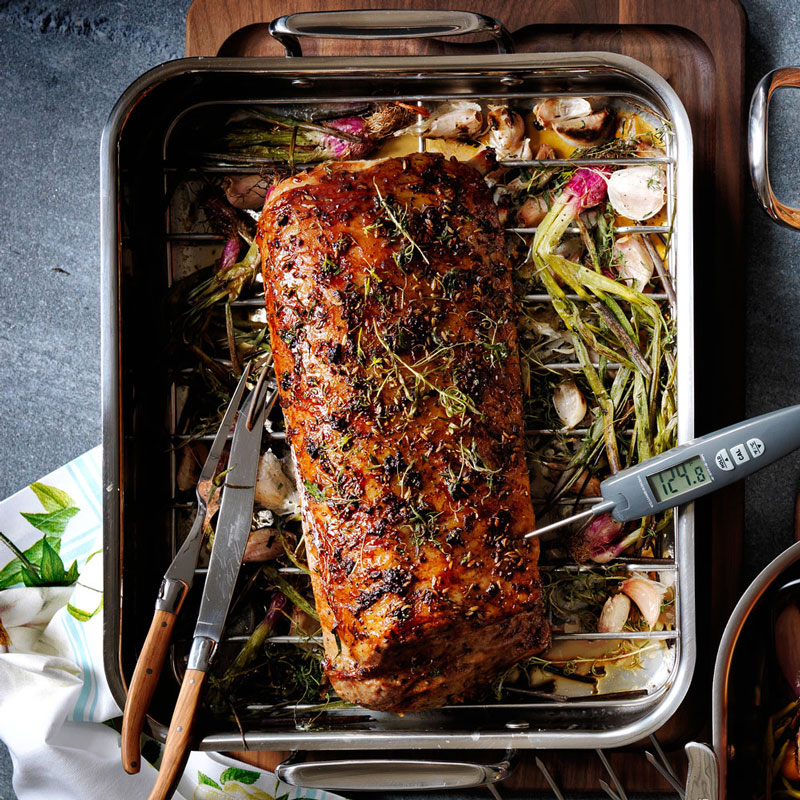
More often than not, you want to dry your piece of meat—if that’s what you’re cooking—before putting it in the oven. A lot of folks think you should salt and season it, then leave it uncovered in the fridge to let the skin dry out and salt permeate the meat. (See: dry-brining!) While roasting, be sure hot air is circulating around the meat as much as possible, which is the best way to ensure crisp skin. The way there from here? A roasting rack.
Here’s the nitty-gritty about roasting pans, roasting racks, and the other tools you’ll need:
1. Roasting Pans
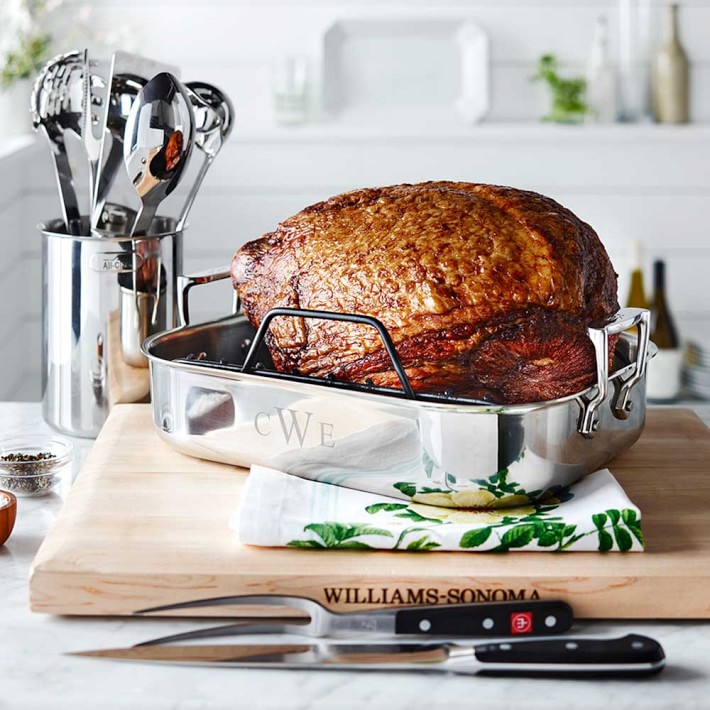
The bare minimum for turkey roasting would be the rimmed aluminum baking sheet and matching flat roasting rack approach, as some pros do. But you’ll miss out on gravy—unless you are a pro, it is tricky and messy to deglaze a baking sheet—and the ability to sear your roast stovetop in the same pan you cook it in.
The next step up isn’t that pricey: You can snag a stainless-steel, enameled cast-iron, ceramic nonstick, or copper roasting pan, with or without a roasting rack set in it. (More on those below.) The pan’s material will impact its ability to conduct heat.
It’s the hot air of the oven that does the majority of the crisping, which is why pros agree that you want as much hot air circulating around your meat as possible. (That’s why you keep an eye on how high the sides of the pan you choose are; you want enough room to nestle in potatoes, gravy and aromatics. You don’t want sides so high that your meat steams.) If you plan to sear your meat at any stage, a heavy copper or cast-iron roaster, for example, will contribute a wallop of heat to your food during that process.
Also, consider looks: Do you anticipate plating your roast in its pan on a trivet for Thanksgiving? Then consider copper or enameled cast-iron.
How about size: How big is your family? How big will your Thanksgiving bird be? And—crucially—how big is your oven? One of our most popular (All-Clad) roasters comes in two sizes. One accommodates a 15-pound bird, and the other a 20-pound bird.
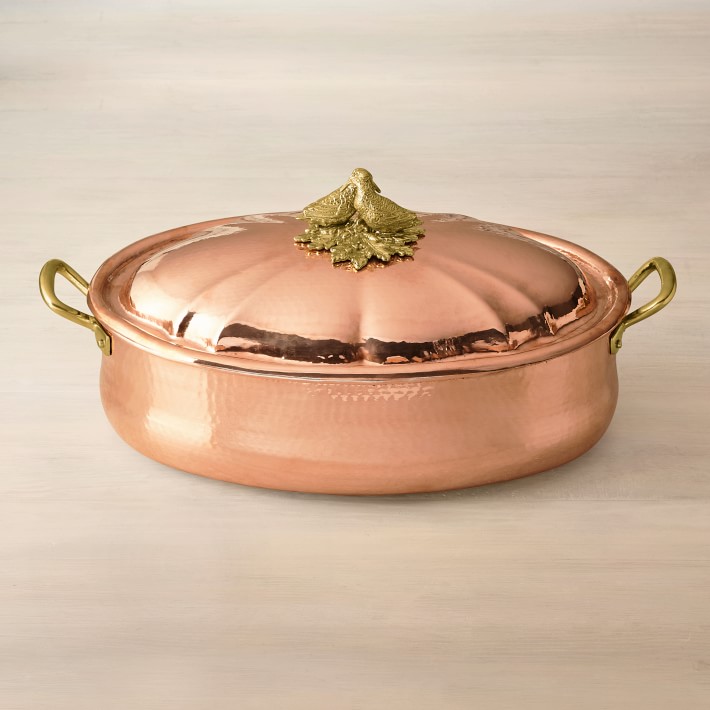
Maybe it’s just you and your partner and you’ll be only hosting tiny dinner parties for the foreseeable future. Then consider a delicate, gorgeous copper roasting pan (with a lovebirds knob!) that can double for elegant braises to impress company.
And although yes, you could roast using the disposable aluminum roaster approach, you can’t use that pan for gravy on the stovetop; it’s dangerous. And in our experience, those pans can fall apart. Why not have something beautiful that will last this holiday to the next?
2. Roasting Racks
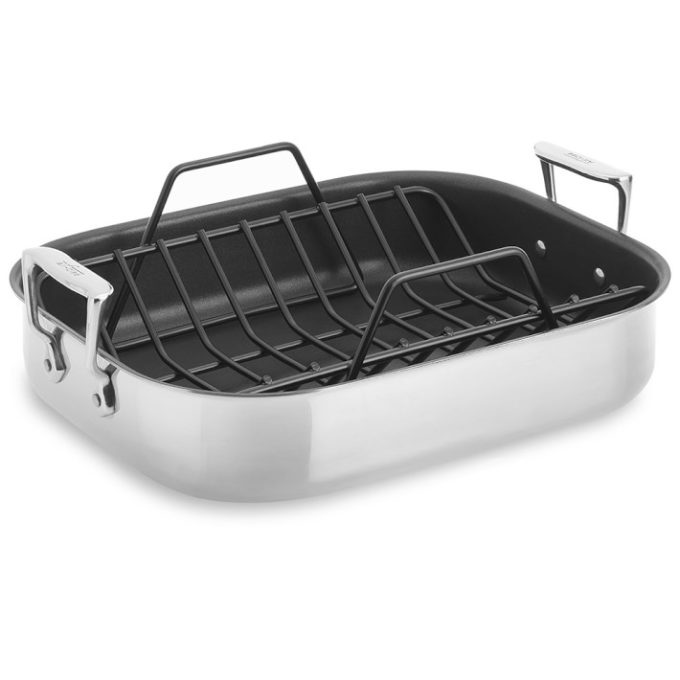
A rack is crucial no matter which way you go. Putting a roast or bird right in a pan and plopping it in the oven means the bottom of that bird will braise or steam in its own juices. That sounds yummy, but it means you’ll miss out on crisp skin and evenly cooked meat. The two options out there are flat racks and V-shaped racks.
Flat racks offer more surface area for aromatics, potatoes, squash, and whatever else you want to tuck under your bird. They can also sometimes be repurposed for other uses, such as roasting sheet pans of vegetables. Some pros prefer these to V-shaped racks, which are somewhat more limiting, because they’re made to hold a roast and nothing else. (Those who like them probably like that they “lift” the sides of a bird up to access hot air.)
3. Other Tools
Bulb Baster
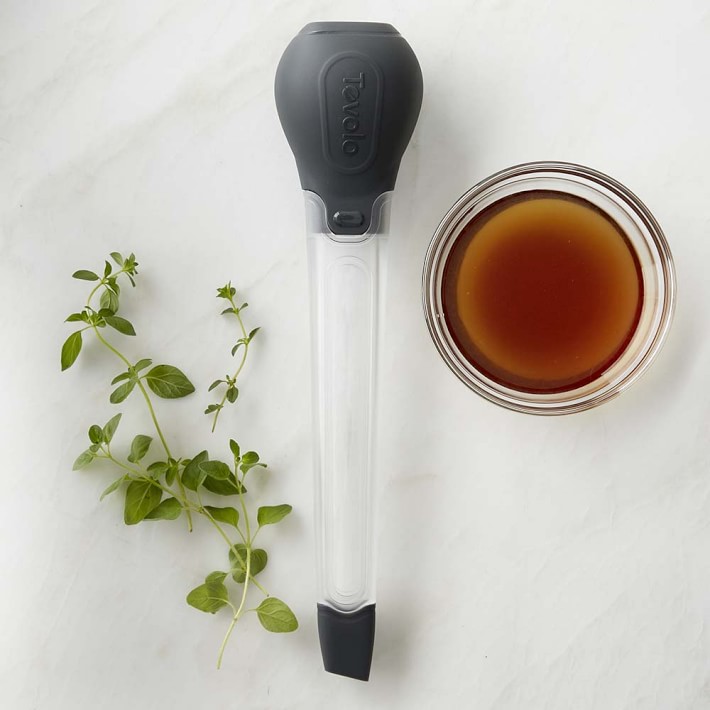
A lot of recipes—whether for red meat or poultry—will ask you to baste as you go. We love bulb basters, especially those with narrow tips like this one, which can get into corners, for this task. (The idea is that shellacking the skin of the meat with fat will give it an extra-burnished look and extra flavor.)
Meat Thermometers
How many times have you heard about the Butterball that came with a thermometer that “never popped up?” Don’t put yourself through that (and, hello, we have superior turkeys.) We’ve got pop-‘em-in instant-read thermometers, infrared thermometers that just hover over the roast, and anything else you could need in that department.
Fat Separator
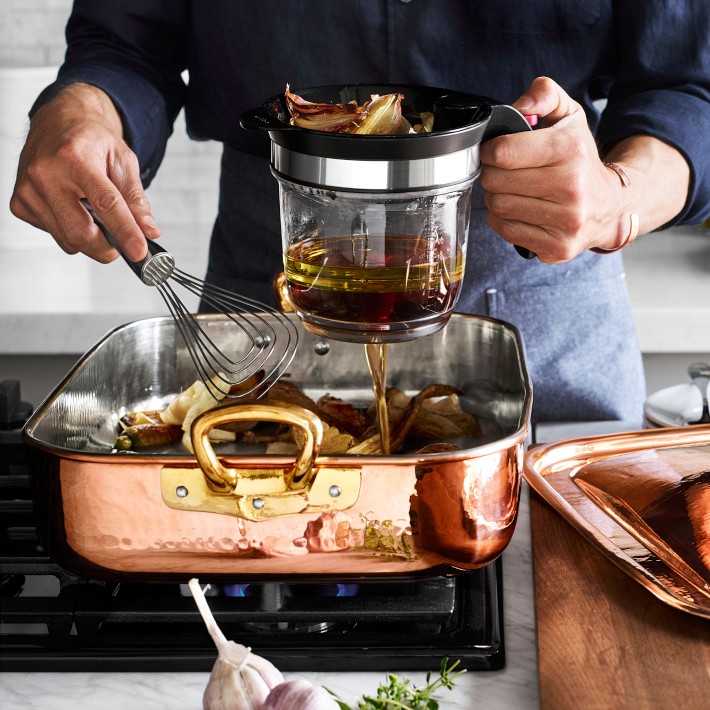
Are we the only ones who struggle to quickly separate fat from the meat juices that collect in the bottom of our roasters? Save yourself from the messy, problematic, soup-spoon-on-the-bubbles approach of getting some fat out. Get a fat separator. It’s like magic, pouring the pan liquids into the transparent measuring cup–size cup and watching the fat rise to the top. This model has a handy little button you can press to release the meat drippings from the cup bottom right into your gravy. It’s downright elegant.
All-in-One Kit
OK, you’re sold. You’re ready to rumble—and roast. Don’t overthink it: Just get this. It’s an awesome kit for turkey, but works fabulously for any large roast. There’s a bulb baster, digital thermometer, brining bags, basting brush, turkey forks (to help transfer a roast), a fat separator, and our ultimate stainless-steel roasting pan with included rack.
